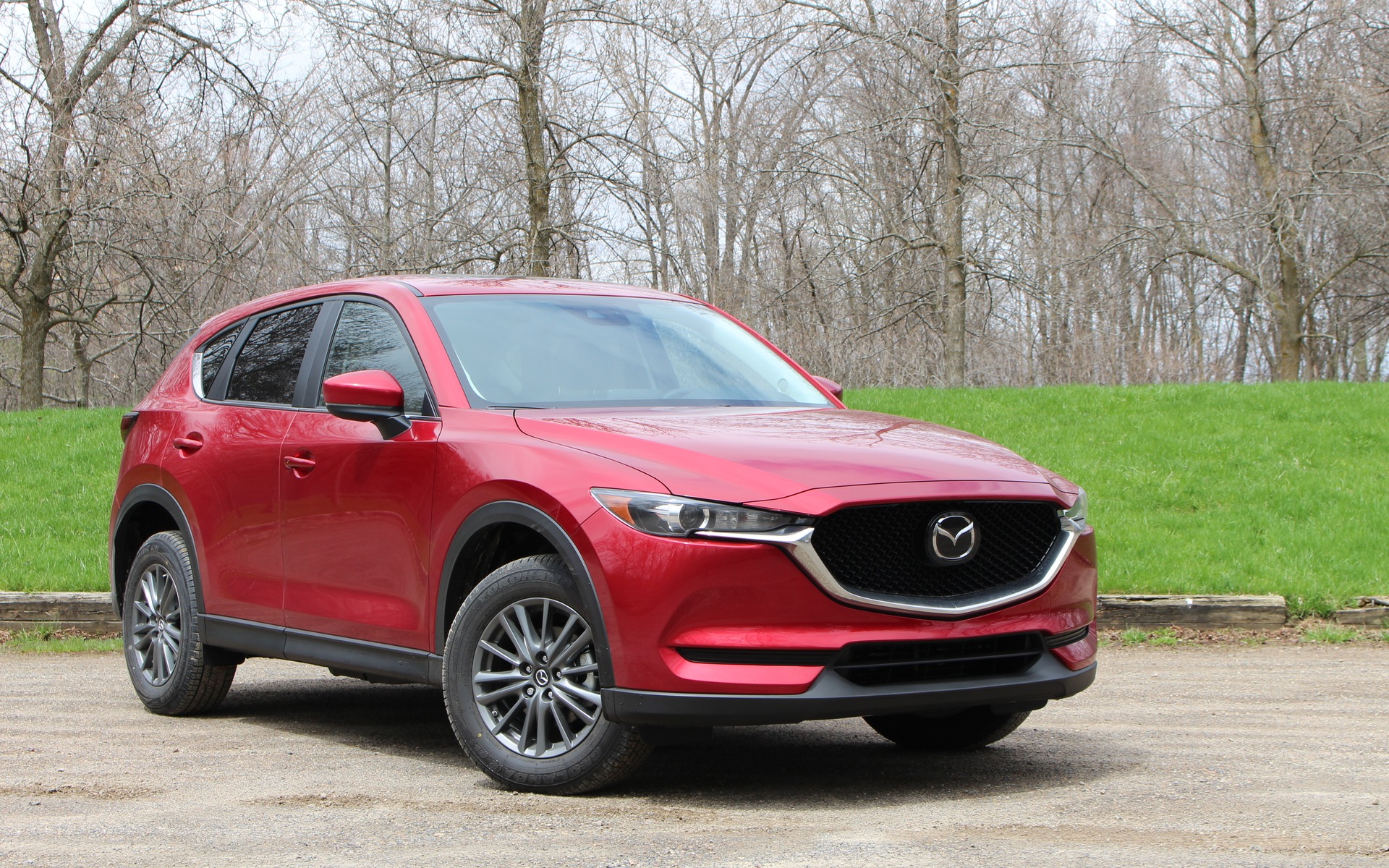2017 Mazda CX-5: Beauty that’s More than Skin Deep


Buyers of mainstream vehicles must obviously base their purchase decision on rational criteria, such as monthly payments, fuel economy, reliability and resale value. In addition, owning more than one car per household is getting more and more expensive, and we also would like to contribute to the environment by using public transport. So, we have to choose one vehicle that can satisfy all our needs, or as many as possible.
That’s why small SUVs are gaining popularity. In the compact utility vehicle segment, Canadians are flocking to the Honda CR-V, the Ford Escape and the Toyota RAV4, but year after year, sales of the Mazda CX-5 rise. Slowly, but surely, this SUV is becoming a household name, even if it’s still way behind its aforementioned rivals on the sales charts.
Read also
What makes the 2017 Mazda CX-5 so appealing, and what sets it apart from other compact SUVs is its design. Sure, beauty is in the eye of the beholder, but we must admit that the Mazda’s bodywork is elegant. Seductive. Sexy?
While we emphasize rational aspects during the car-shopping process, at a similar price point and with a comparable level of features, can we let our emotions speak a little when we’re making that all-important decision? The first generation of the CX-5 was a looker, but the new design of the 2017 edition is even more stylish. The shape of its grille, its athletic proportions and its curvy posterior would stand out on an SUV sold by a luxury brand. Especially with the new Soul Red Crystal Metallic paint, well worth the extra $450 compared to a base colour.
That said, the 2017 Mazda CX-5 isn’t selling on looks alone. Okay, let’s skip the base engine, a 2.0-litre four that develops 155 horsepower. It might suit the Mazda3 just fine, but the CX-5’s extra weight requires a little more muscle, and it can only be matched to a manual gearbox, which few SUV buyers choose anyway.

The GX trim with the automatic transmission as well as the GS and GT get a 2.5-litre engine that produces 187 horsepower and 185 pound-feet of torque. With this powertrain, the CX-5 still isn’t a rocket, especially compared to the Ford Escape or the Kia Sportage with their available turbocharged, 2.0-litre engines. However, in normal driving conditions, the Mazda performs just as well as its competition.
The six-speed automatic also does a good job, with smooth gear changes and a Sport mode that, when activated, livens up the throttle and retards upshifts for a sportier drive. A slightly sportier one.
Fuel economy in the 2017 Mazda CX-5 is good, but it can’t match the new Honda CR-V’s and its turbocharged, 1.5-litre engine. Or the Nissan Rogue’s. Equipped with all-wheel drive, the CX-5 boasts city/highway numbers of 10.2/8.3 L/100 km as well as a combined rating of 9.2. During our test, we observed an average of 9.5 L/100 km, which isn’t too bad.
Another emotional aspect in favour of the CX-5 is its dynamic driving characteristics. Short of being resolutely sporty, this SUV sets itself apart from its rivals with its more incisive steering feel and well-controlled body motions, without compromising ride comfort with a too-firm suspension.
The CX-5’s cockpit is also visually pleasing, although it’s not as distinctive as the design of the vehicle’s bodywork. As usual, the materials used are of good quality, although the glossy black trim quickly collects dust and fingerprints.
In the CX-5 GX, we get cloth upholstery, while leather is featured in the GT. As for the mid-level GS, the one we drove, the seats are covered in a mix of leather and faux-suede, and heated up front. It’s worth nothing here that several competitors include heated seats as standard equipment. Space is sufficient, although in back, rivals such as the Chevrolet Equinox and GMC Terrain are more accommodating.
In the GS and GT trims, the rear seat offers a fold-down centre armrest, in which two USB ports were installed. Passengers can thus keep their devices fully charged—except if someone is occupying the middle seat.

The Mazda Connect infotainment system and its multifunction knob is a charm to use, while the volume knob on the centre console is perfectly located. The screen is touch-sensitive only when the vehicle is immobilised in order to reduce driver distraction, but once we get used to the menu layout, the system’s user friendliness shines through. As for the navigation system, the map’s graphics could be more elaborate.
From a versatility standpoint, cargo space is slightly inferior to the category average, and when the rear seatbacks are folded down, we obtain up to 1687 litres of volume. In comparison, the class-leading CR-V boasts a cargo volume of 2146 litres. At last in the Mazda, we can quickly fold down the rear seats with the help of cargo-area mounted release handles.
The 2017 Mazda CX-5 starts out at $24,900 before freight and delivery charges, but adding all-wheel drive and an automatic transmission raises the price at $28,300. Our GS grade, equipped with the Comfort package (sunroof, intelligent key, rear passenger air vents, dual-zone climate control) and the i-ACTIVESENSE package (adaptive cruise control, Smart Brake Support, Forward Obstruction Warning, lane keep assist, automatic high beams), cost $33,500.
In the compact SUV segment, where rational judgement is key, the CX-5 isn’t the most spacious, the most affordable or the most fuel-efficient. However, in many aspects, it isn’t very far from the top, and is the emotional choice for its interior and exterior design.








